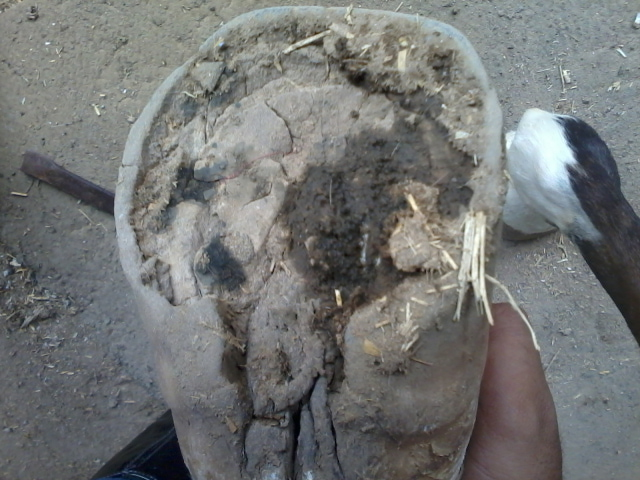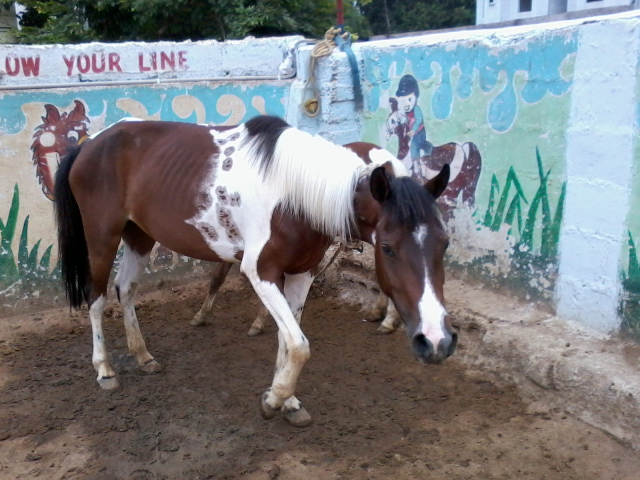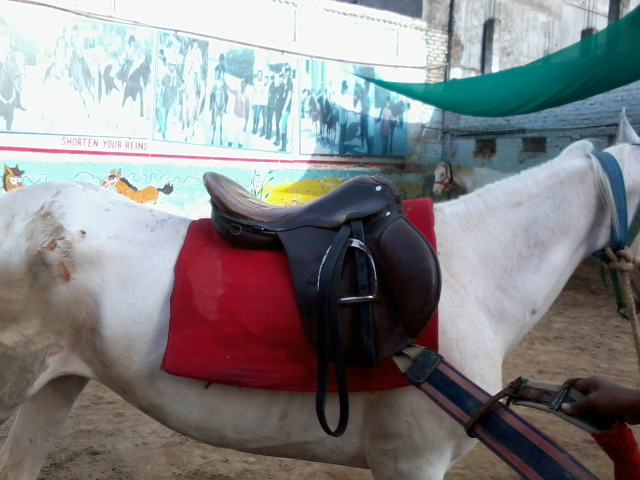Questioncan u help me with western pleasure with my horse, a qt horse, young, how do i get it to pleasure properly. how do i condition him.
AnswerQuestion: I want to include trail in my all-around repertoire but am intimidated by lope-over obstacles. How do I get the striding right, so my horse neither stumbles nor launches over the poles?
Jerri Lowry
Dallas, Texas
Answer: To master trail class lope-overs, you need to know the average length of your horse's stride, so you can plan your approach to each lope-over segment accordingly.
Related Resources
Pole-Crossing Exercises
Teach Your Horse to Focus on the Pole
More Western Training Articles
A western horse's average lope-stride is six to seven feet. To determine your horse's stride, set up a series of three to four poles, six to seven feet apart. Establish a cadenced lope, then guide him to the center of the first pole. Does he have to reach, or compress, to negotiate each subsequent pole?
A reach means that your horse's stride is shorter than the distance between your poles; compression means his stride is longer. Shorten or lengthen the pole series accordingly, until he can lope through them in perfect rhythm. Record and memorize that distance.
Next, change the pole configuration, setting up a spoke with three poles set about six to seven feet apart at their centers, around a "hub" cone. Then walk through it, measuring with your own three-foot stride the best track for your horse, based on his stride length.
For instance, if your horse's stride length is longer than average, aim him to the outside of each pole's midpoint to lengthen the distance. If his stride is shorter, aim slightly to the inside of center to shorten the distance. If his stride is average, aim for the center
When your horse moves in a balanced, collected frame, he's propelling himself forward from his hindquarters rather than dragging himself along with his front end. Not only will this lengthen his stride, but it'll increase his maneuverability and present a more natural, pleasing picture, in keeping with recent AQHA western pleasure judging recommendations.
Related Resources
Wanted: Light Footed Loper
More Western Pleasure
The Equine Collection
How to Win at Western Pleasure - Robert C. Milkie
My rule of thumb is that you know your horse is loping correctly when it feels as though he could change leads at any time. I'll discuss three different levels of the lope, from a downhill, man-made looking lope to a true, balanced lope.
1. If your horse's head is behind the vertical and her weight is shifted to the forehand, she looks as though she's loping downhill. As a result, she'll appear as though she's laboring and uncomfortable. She may have an intimidated expression or pinned ears. Rather than having her feet land softly, with the same stride length between her front legs and hind ones, she'll move unevenly and her feet will hit the ground hard. She'll feel rough and choppy from the saddle. And, this short, choppy stride is counter to the long-strided, slow-legged movement that comes with true collection.
2. Try easing your restraint on your horse's front-end and add a bit of impulsion. You'll help her balance and she'll move more naturally -- and she'll be happier. Her weight will shift back onto her hindquarters a bit more, and she'll be better able to use her shoulders. With a bit more collection, you'll improve her balance and athleticism.
3. Now, maintain the impulsion you've developed by bringing your horse's face perpendicular to the ground. You'll balance her body and improve her stride. Her hip will look bigger and longer (evidence she's using it to balance her weight and power her stride.) This rearward shift will round her back, and she'll be able to elevate her shoulders. This freedom in her shoulders will create a longer stride.
regards
patt

 thrush on hoof
Question
thrush
hello. hope you can answer this
thrush on hoof
Question
thrush
hello. hope you can answer this
 ponies breed
Question
ponies
hello Dorothy. may i know which
ponies breed
Question
ponies
hello Dorothy. may i know which
 A horse that doesnt like to be around unfamiliar horses
QuestionCruiser
QUESTION: Im 53, I have about a
A horse that doesnt like to be around unfamiliar horses
QuestionCruiser
QUESTION: Im 53, I have about a
 saddle laid correctly
Question
saddle laid
hello Lyn, is this saddle l
saddle laid correctly
Question
saddle laid
hello Lyn, is this saddle l
 bleeding hooves - Rick Gore Horsemanship
Question
hooves
hi rick! I have attached a photo so you
bleeding hooves - Rick Gore Horsemanship
Question
hooves
hi rick! I have attached a photo so you